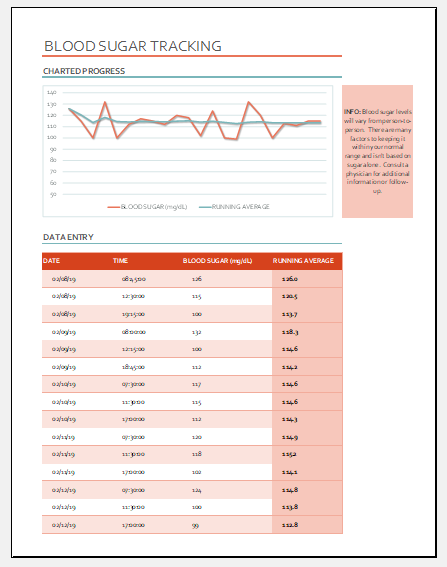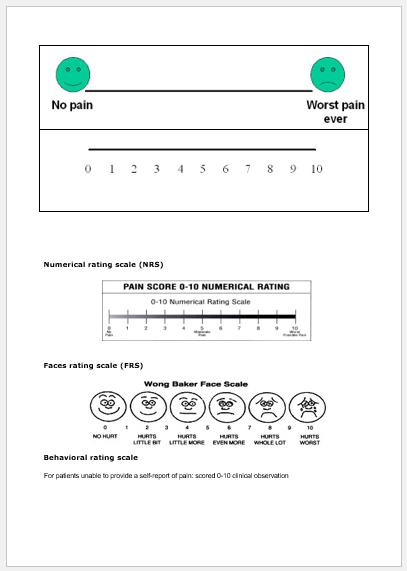Diabetes is an increasing disease worldwide. Due to the unlimited options available for unhealthy and ready-to-eat food, we are unknowingly addicted to it. Added causes are a sedentary lifestyle which actually leads to a number of other diseases as well.
The sugar levels in our blood need to be maintained so that they cannot give rise to other diseases and syndromes. Diabetes can be caused by insulin intolerance or many other major and minor factors. But once diagnosis of diabetes has been established, its proper treatment and management is required which starts with the tracking of blood sugar levels at different times of the day.
Description of blood sugar tracking chart
A blood sugar tracking chart is very easy to understand. It may look difficult at first but once we know why these certain columns and things are written, it becomes very easy to understand and follow even if a non-medical person is to record at home.
- It starts with the name, age, and sex of the patient which is very important because we want to administer any drug to the wrong patient.
- The major diagnosis of the patient, type of diabetes would be great to mention.
- The date at which the blood sugar tracking is being started, because we have to make a weekly chart.
Blood sugar at breakfast lunch and dinner
We often notice that there are three rows for blood sugar levels for breakfast, lunch, and dinner. It is so because normal ranges of blood sugar levels are different at different times of the day. That’s how our hormones function.
Pre-meal and post-meal blood sugar levels
There are two columns in front of each row. For example, you will see a row labeled as “breakfast” and when you look in front, of this column, you will notice two columns of before and after. This is for the very same reason. Normal blood sugar levels are different before the meals and after meals. They are different if the patient is fasting or just had a meal.
Similarly, at lunch you may have to check blood sugar levels before meal and then two hours after meal, because then is the time when blood sugar levels are changed after meal.
The same applies to the pre and post-dinner blood sugar levels.
The implication of a blood sugar tracking chart
Once a good record of blood sugar levels for a couple of weeks is obtained, the doctor gets a very good idea of the nature of the disease and this helps in the management of diabetes at a very efficient level. The blood sugar tracker tells us whether the particular patient can control his disease by changing his diet and lifestyle or whether he has to take medicine. In the case of medicine, a doctor decided whether a patient needs oral hypoglycemic agents or injectable drugs are required to control the sugar.
We can also educate the patient about the nature of his disease and what important measures he can take to delay the complications of diabetes mellitus.



